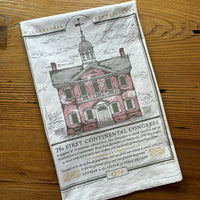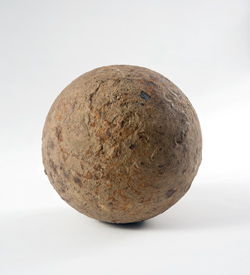When I spoke to the Massachusetts Society of the Cincinnati in February, a descendant of artillerist
William Burbeck asked me a provocative question about
The Road to Concord.
After the Boston
militia train’s four brass
cannon after they disappeared in September 1774, Gen.
Thomas Gage expended a lot of effort on locating them. In February 1775 he may have sent Capt.
William Browne and Ens.
Henry DeBerniere to
Worcester to hunt for them.
Gage definitely sent Lt. Col.
Alexander Leslie and his
troops to
Salem to seize them. He sent Browne and DeBerniere to
Concord to confirm they were in that town, and then he organized the fatal expedition on 18–19 April to grab them.
Gage’s final orders for the commander of that April expedition, Lt. Col.
Francis Smith, said: “If you meet any Brass Artillery, you will order their muzzles to be beat in so as to render them useless.”
After all that hunting, why didn’t Gage order those guns to be returned to Boston?
Here’s my analysis of the general’s thinking and why he’d have been happy to hear that those four cannon were destroyed. (As it happened, Patriots had already moved them beyond Concord, perhaps to
Stow, by the time the redcoats arrived at
James Barrett’s farm.)
First of all, those four cannon didn’t pose a big military threat. They were two- and three-pounders, fine for training on but not the biggest force in battle. The Royal Artillery had many more and bigger weapons. Furthermore, intelligence suggested that the Patriots hadn’t succeeded in mounting them well.
Rather, I posit, those field-pieces posed a bigger threat to Gage’s standing with his superiors in London. He had put sentries in front of the armories, patrols on the Boston streets, and guards at the town’s only gate—and yet those four guns had disappeared. Gage had reasons to suspect they had also been slipped past Leslie’s reach in Salem before being moved to Concord. (In fact, they arrived in Concord from
Dorchester, but he didn’t know that.) In sum, those four brass cannon made him look utterly incompetent.
The general never reported the disappearance of those guns to
Lord Dartmouth, Secretary of State, or
Lord Barrington, Secretary of War. In fact, in describing the Salem mission, he suggested that he had
intelligence about cannon being smuggled in from
Dutch territory; there’s no such report in his file. As each month ticked by, Gage may have felt more pressure to resolve this problem before his bosses learned about it.
Thus, Gen. Gage’s top goal for the Concord expedition wasn’t to recover those guns—it was to make their potential to embarrass him
go away. Turning the four cannon into useless hunks of bronze out in the countryside looked like the most efficient way to do that. Then he could report to London that his men had succeeded in destroying all the artillery they found without raising many questions.
In contrast, carting those field-pieces back to Boston would have prompted questions about where they had come from. Country folk would have seen them, as would the soldiers themselves. Boston militia leaders might have demanded them back (playing dumb about who stole them). The ministers in London may have become curious. All that would have made it harder to keep the embarrassing story of the cannon thefts quiet.
Gage was also concerned for his soldiers. Hauling several hundred pounds of metal along the road to Boston would have required a wagon and
horses, plus men guarding that transport, all moving more slowly than soldiers on the march. The general didn’t send Lt. Col. Smith out with wagons because he wanted the troops to move fast—expeditiously, in fact. Even if they had confiscated a wagon and draft horses in Concord, their return trip would be slower if they brought the cannon along.
Gage actually gave orders for the regulars
not to weigh themselves down too much:
You will order a Trunion to be knocked off each Gun, but if its found impracticable on any, they must be spiked, and the Carriages destroyed. The Powder and flower must be shook out of the Barrels into the River, the Tents burnt, Pork or Beef destroyed in the best way you can devise. And the Men may put Balls of lead in their pockets, throwing them by degrees into Ponds, Ditches &c., but no Quantity together, so that they may be recovered afterwards.
The goal was to destroy the provincials’ military supplies as quickly as possible and then get back to safety. He hoped Smith’s men would be able to meet up with Col.
Earl Percy’s relief column before the rebels organized a military response. That didn’t happen. But the situation would probably have been even worse if the troops were withdrawing from Concord at wagon speed.





















